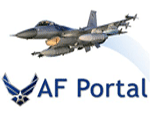History of Luke AFB
On 8 August 1940, the same day the Battle of Britain began, President Franklin D. Roosevelt directed the military to produce 12,000 pilots annually. In response to that order, the Army Air Corps conducted feasibility studies for the construction of eight new air fields. Phoenix City Manager Donald C. Scott announced on 13 February 1941 that the War Department had approved a site two miles north of the town of Litchfield Park, AZ, for the construction of an advanced single engine flying training base. The site not only had almost year-round flying weather, but it also enjoyed proximity to vast stretches of Sonoran Desert that were ideal for bombing and gunnery practice. Two days later, Lt Col Ennis C. Whitehead arrived in the area to supervise construction of the base and to act as its first commander.
Ground was broken for Litchfield Park AB on 31 March 1941, and on 6 June 1941 the installation was renamed Luke Field for 2d Lt Frank Luke, Jr., a Phoenix native who was a World War I ace and the first aviator to be awarded the Medal of Honor. The first student pilot class began training the next day. During World War II, Luke Field produced 17,321 graduates from fighter training programs for the US and its allies. The base closed on 30 November 1946.
Luke was redesignated an air force base when it reopened on 1 February 1951 in response to a need for fighter aircrews generated by the Korean Conflict. The base was initially equipped with F-51 Mustang and F-84 Thunderjet aircraft. In 1957 Luke AFB joined the supersonic age when the F-100 Super Sabre was assigned to the installation. That was followed in 1964 by foreign military sales programs in the F-104 Starfighter and the F-5A Freedom Fighter. The A-7D Corsair arrived in 1969, but was reassigned when the decision was made to make Luke USAF's primary F-4 Phantom II training base. The first F-4 was assigned in 1971. The first of the "Superfighters," the F-15 Eagle, was assigned to the base in 1974 followed in 1982 by the second "Superfighter," the F-16 Fighting Falcon, and then the F-15E Strike Eagle arrived in 1988. Three years later, in 1991, a decision to make Luke AFB the service?s primary F-16 training base led to the reassignment of the F-15 and four years later, in 1995, the F-15E was reassigned.
Prior to the reassignment of the F-15E, the real world political and military situation resulted in a perceived lessening of international tensions and resulted in a down-sizing of the nation?s military. Senior Air Force leadership moved to ensure the most highly decorated units in USAF history remained part of the active force during the drawdown. That led to the reassignment of one of the most highly decorated units in USAF history, the 56th Fighter Wing, from scheduled-to-close MacDill AFB, Florida, to Luke AFB on 1 April 1994. Since 1941, Luke has produced more than 56,300 graduates from fighter training programs for the US and its allies and is truly: " The Home of the Fighter Pilot."




